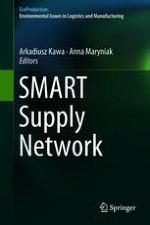2019 | OriginalPaper | Chapter
The Importance of Information Flow and Knowledge Exchange for the Creation of Green Supply Chains
Author : Anna Brdulak
Published in: SMART Supply Network
Publisher: Springer International Publishing
Activate our intelligent search to find suitable subject content or patents.
Select sections of text to find matching patents with Artificial Intelligence. powered by
Select sections of text to find additional relevant content using AI-assisted search. powered by
